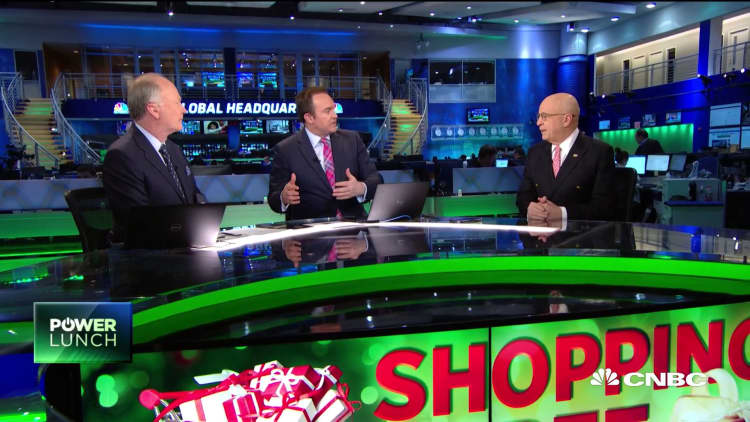
In the few short weeks leading up to the holidays, Americans went all out on spending. It will take much, much longer to pay it off.
The surge in spending last month may have contributed to the best holiday shopping season in years. Through Dec. 24, holiday retail sales rose 3.4%, while online sales jumped a record 18%, according to data from Mastercard.
However, Americans racked up about $1,325 in holiday debt on average over that time, according to MagnifyMoney's annual post-holiday debt survey.
More from Personal Finance:
Financial hangover? Here are some quick fixes
Make realistic financial goals your first resolution for 2020
New year, new tax updates. What you need to know for 2020
From gift buying to travel expenses and other holiday-related costs, holiday debt rose 8% this year and was up a whopping 34% from when the survey was first conducted in 2015, MagnifyMoney found.
Further, more than three-quarters of those polled said they won't pay off their balances in full by the end of January, which means they will also rack up interest charges on those bills.
More than half of shoppers, or 58%, said they'll pay off the debt in at least three months, MagnifyMoney found. About 15% said they will only make the minimum payments.
From month to month, credit cards are one of the most expensive ways to borrow money. Card rates now stand at 17.4%, on average, down only slightly from a record high of 17.85% in July.
If you only made the minimum payments on a $1,325 balance, it would take more than five years to pay it off, while racking up more than $600 in interest charges (assuming an interest rate of about 15%).
Still, many Americans continue to take on ever-increasing amounts of borrowing. As credit card balances creep higher and Americans' confidence in their ability to pay their bills declines, adding on even more high-interest debt is a "slippery slope," said Brianna Wright, a consumer research specialist at MagnifyMoney.
"We are trending higher and higher," she said.
Altogether, outstanding consumer debt now exceeds $4 trillion.
MagnifyMoney polled more than 1,100 adults from Dec. 20 to Dec. 23, 2019.


